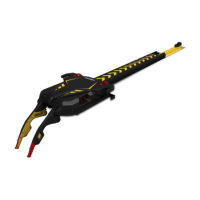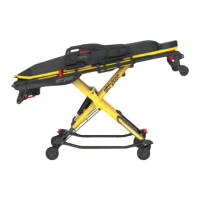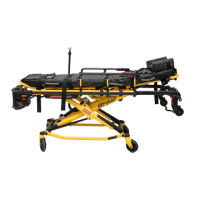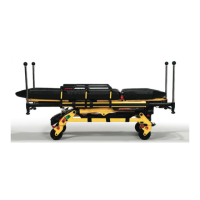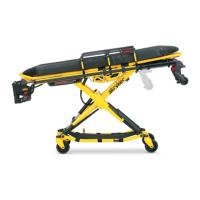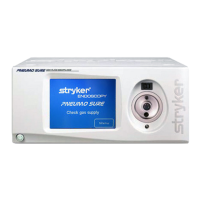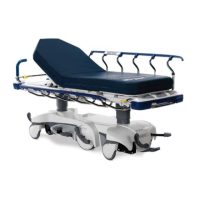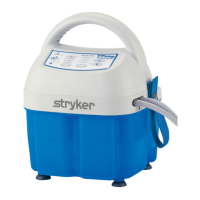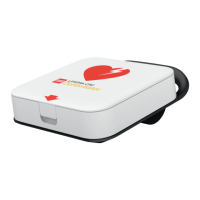TTrroolllleeyy ddooeess nnoott lloocckk iinn tthhee llooaaddiinngg ppoossiittiioonn
If the trolley is unlocking from the transfer:
1. Remove the cot.
2. Move the trolley to the middle of the transfer.
3. On the extended transfer (located just to the head end of the foot end fastener), the transfer trolley pawl (6390-001-073)
should be sticking out of the transfer about 1/2”. If the pawl is not sticking up or does not return when pressed, check its
return spring. Make sure that there is no debris in the return spring.
4. Make sure that the pin of the roller in the pawl is not sticking out on either side.
5. Remove the transfer head end dead stops.
6. Remove the transfer from the anchor.
7. Clear any debris or foreign material from the top of the anchor and the channels in the transfer.
NNoottee -- Foreign objects that do not allow the trolley to reach the full out position could cause the mechanism to not
operate properly.
8. Inspect the trolley stop ramp (6390-001-325) on the underside of the trolley middle mechanism to make sure that it is
present and secure.
If the transfer is unlocking from the anchor:
1. Remove the cot.
2. Move the trolley to the middle of the transfer.
3. Check for debris around the transfer lock trigger (6390-001-231).
4. Push the transfer all the way to the transport position.
5. Pull on the transfer to make sure it is locked.
6. If the transfer is not locked, the transfer lock pin in the anchor may be stuck or broken.
7. Check the return spring and look for burrs or debris.
TTrroolllleeyy wwiillll nnoott uunnlloocckk ffrroomm tthhee ttrraannssffeerr ppoossiittiioonn
1. Remove the cot.
2. Using the head end transfer lock override slide (6390-001-261), move the transfer in and put the trolley in the mid
position.
TTrroolllleeyy ppuummpp rruunnss ffoorr aann eexxtteennddeedd ttiimmee aafftteerr ccoott jjoogg uupp
1. Check the angle position sensor (APS) (6390-001-397) calibration set point. Contact Stryker Technical Support.
2. Remove the patient right side cover. Make sure that the hydraulic cylinder is not “over-stroking.”
NNoottee -- A ~1/8" back settle in the rod of the hydraulic cylinder at full extension is a sign of the over-stroke condition
3. Check for damage of components in the chain of load bearing parts from the lifting arms to the patient right side plate
(6390-001-344).
CCoott ddooeess nnoott lloocckk iinnttoo tthhee ttrroolllleeyy aanndd LLEEDDss ffllaasshh aammbbeerr
1. Remove the cot from PPoowweerr--LLOOAADD.
2. Make sure that the cot is a PPoowweerr--LLOOAADD compatible cot and that the load wheel horns and pins (6500-002-104) are
present, properly tightened, and in good condition.
EN 18 6390-309-002 Rev AB.0
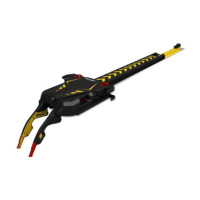
